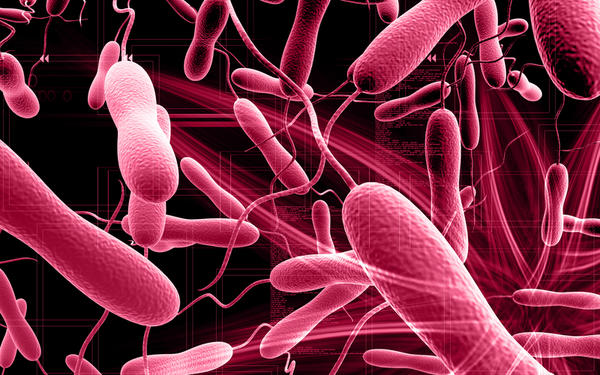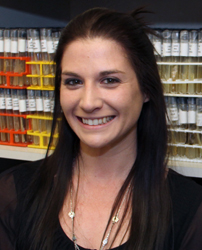Vibrios Cholera
WE RECENTLY WROTE AN ARTICLE ON UTILIZATION OF THE REAL-TIME, HIGH ACCURACY and high-resolution water sampling and quality monitoring data from Florida Atlantic University (FAU) Harbor Branch’s LOBO system.
In response to this article a reader wrote:
“Bacterial load is a serious issue, and I didn’t see anything on that, but I may have missed it.”
No, this reader didn’t miss anything. From this site, http://fau.loboviz.com, LOBO collects this data:
Weather: air temperature, barometric pressure, humidity, rain, PAR (light), wind direction, wind gust and wind speed.
Water Quality: temperature, salinity, dissolved oxygen, 02% saturation, turbidity, CDOM (water color), chlorophyll a, nitrate concentration, depth (instrument), current direction and current speed.
So if LOBO’s don’t concern themselves with bacterial load, who does?
FAU graduate student Gabby Barbarite and Harbor Branch research professor Peter McCarthy, Ph.D do.
Ms. Barbarite has recently completed a first-ever, year long research study; her Ph.D dissertation, on pathogenic (capable of causing disease) Vibrio Bacteria in the Indian River Lagoon. The study was to determine areas of concern and educate the public about potential hazards.
When the research study was first announced by Harbor Branch in July, 2014 Ms. Barbarite said: “The Lagoon is not only ecologically important, but it is also a great area for aquatic activities like boating and fishing. This study will help us understand the distribution of these pathogens and the sources that they are associated with, in order to make everyone’s time spent on the water as enjoyable and safe as possible.”
Gabby Barbarite
Ms. Barbarite’s Ph.D dissertation was conducted under the guidance of Peter McCarthy, Ph.D, Principle Investigator, Research Director and Associate Director for Education at Harbor Branch’s Marine Biomedical and Biotechnology Program.
According to Dr. McCarthy, in July 2014, “It’s likely that these bacteria have always been in the Lagoon system, we’re just the first to specifically look for them.”
Peter McCarthy, Ph.D
Indeed, according to Ms. Barbarite’s study, vibrios bacteria are naturally occurring, not the result of human pollution. They are naturally suppose to be here. Just like Methicillin Resistant Staphylococcus Aureus (MRSA) – pronounced MER-SAH, a very common type of bacteria (or germ), that up to half of all people carry on their skin and in other areas of the body.
Bacteria are microscopic single celled organisms that are one of the most numerous organisms on earth. They are so small that over five million could be placed on the head of a pin. (Source: usawaterquality.org)
The name Vibrio refers to a large and diverse group of marine bacteria found in estuaries and bays.
Vibrio are in the same family of bacteria that cause cholera. There are over 80 species of Vibrio bacteria. Vibrio vulnificus, Vibrio parahaemolyticus, Vibrio fluvialis, Vibrio mimicus, and Vibrio alginolyticus are some of the species known to cause infection when people are exposed by open wounds or punctures that occur while swimming, wading, crabbing, or fishing.
Not all strains of Vibrios cause human illness and many can actually benefit the ecosystem.
Ms. Barbarite’s study focused on Vibrio vulnificus, V. parahaemolyticus and V. cholerae in the Lagoon, three of the most harmful. She used a combination of cultivation and molecular techniques detecting these pathogens in sediment, water, fish and shellfish collected from a series of sites. Her findings revealed an important health concern and the need to inform the public and medical care providers of these hazards to improve recreational safety.
According to the Center for Disease Control, Vibrio causes up to 80,000 illnesses, 500 hospitalizations and 100 deaths in the United States each year. Clinical characteristics of disease include gastroenteritis, tissue infection and primary septicemia.
Click to access covis-annual-report-2013-508c.pdf
V. parahaemolyticus is responsible for most of the national cases (46%), however disease caused by this bacterium is usually mild, with low hospitalization (25%) and death (2%) rates. Infection from V. vulnificus is less common (13% of total US cases), however it causes the most severe illness, with the highest hospitalization (87%) and death (32%) rates.
Sixty seven percent of US cases are reported from the Gulf and Atlantic coastal regions. Florida has the highest national incidence of vibriosis. Over the last decade, the state reported an average of 133 cases a year. And that most recently, in 2014, there were a total of 167 reports of vibriosis; V. vulnificus was responsible for 32 infections and seven deaths; V. parahaemolyticus caused 30 infections and one death.
20% of these cases came from Indian River County.
While these statistics may seem alarming, Ms. Barbarite’s study points out that these infections are actually quite rare considering the millions of people that participate in water activities and consume local seafood each year.
Vibrio are present in areas of the Indian River Lagoon all year long because of our warm climate. Their presence is directly linked to temperature and salinity; being most abundant in warm (17-35 °C), brackish (5-25 ppt.) waters.
Local oysters, crabs, shrimp and fish carry Vibrio if they live in areas where it is present.
Over the course of one year, at seven sites, Ms. Barbarite and her team caught 620 fish comprising 31 different species to determine if their skin possessed Vibrio bacteria. 65% of the caught and released fish had V. parahaemolyticus and 54% had V. vulnificus.
Most of species who had the bacteria were fish who swim along the muck and sediment, such as sting rays and catfish.
Now, here is where Harbor Branch’s LOBO systems can play a role in helping us be more aware of the presence of Vibrio bacteria. It’s all about the temperature and salinity. The warmer the water and the higher the salt concentration the more likely there will be Vibrio bacteria.
Before you go fishing or boating go to this site to check for those conditions:
We wrote earlier that Ms. Barbarite’s study was to determine areas of concern and educate the public about potential hazards.
Having determined areas of concern, she and Dr. McCarty’s new phase is to educate the public about potential hazards, as they did last week at a September 22, 2015 Beachside Rotary meeting, which I attended.
Here are a few safety tips for fisherman, recreational swimmers and those who wade and kayak. For a complete safety guide visit:
Click to access Vibrio%20FAQs%20and%20Safety%20Tips.pdf
FOR FISHERMAN:
- Wear gloves when handling fish.
- Use circle hooks because they are more likely to catch a fish in the jaw, making it easier to remove the hook.
- Pay attention to areas that can cause injury like spines, shells and claws.
- Before you remove your catch from the water carefully determine if you want to keep it. If not, release it right away.
- Put your catch in a cooler with plenty of ice. Warm conditions promote Vibrio growth.
FOR RECREATIONAL SWIMMERS AND THOSE WHO WADE OR KAYAK:
- Use puncture-resistant foot ware with a good grip.
- Clean gear and wash off after being in the water, especially before handling food.
- Always access the water from a non-obstructed area where the water is visible.
IS IT SAFE TO EAT LOCAL SEAFOOD?
Yes! The easiest way to prevent food-borne Vibrio illness is to avoid eating it raw. Seafood that has been properly cooked and handled should not contain Vibrio bacteria. Many hazards exist when you consume raw seafood, especially shellfish. If you plan on eating raw fish or oysters be sure to get them from a reputable source to ensure they have been processed properly. People with weakened immune systems or those that are considered “at risk” for infection should not consume raw seafood.
Ms. Barbarite says: “When in doubt, cook it!”
Two important points:
No. 1: Vibrio is NOT flesh eating. It cannot breakdown healthy intact skin on contact.
No. 2: There is no Vibrio in the ocean. It is only found in estuaries and bays.
And then, in closing, here is another angle. Dr. McCarthy said vibrio bacteria is now being evaluated for fighting cancer.
According to a June 8, 2015 article in MedicalPress, “A toxin secreted by Vibrio vulnificus has the potential to prevent the growth of tumors, according to a new study by Northwestern Medicine scientists.
Karla Satchell, a professor in microbiology-immunology at Northwestern University Feinberg School of Medicine, and her team demonstrated in a paper in Nature Communications, that a multifunctional-autoprocessing repeats-in-toxin (MARTX) protein from Vibrio vulnificus can inhibit tumor cell growth by cutting the protein Ras. This protein is central to cell division and survival, and mutations in the gene that codes for Ras are a common cause of human malignancies.
‘Ras is important for cell proliferation in cancer, so the toxin could potentially be developed as a treatment for different types of tumors,’ Satchell said. ‘It has been known that Ras has a role in cancer development and targeting Ras has been one of the hardest challenges of cancer research and drug discovery.'”
Article Sources: Ms. Gabby Barbarite’s presentation at Beachside Rotary and http://www.fau.edu





Good article. I absolutely love this site. Keep it up!
LikeLike